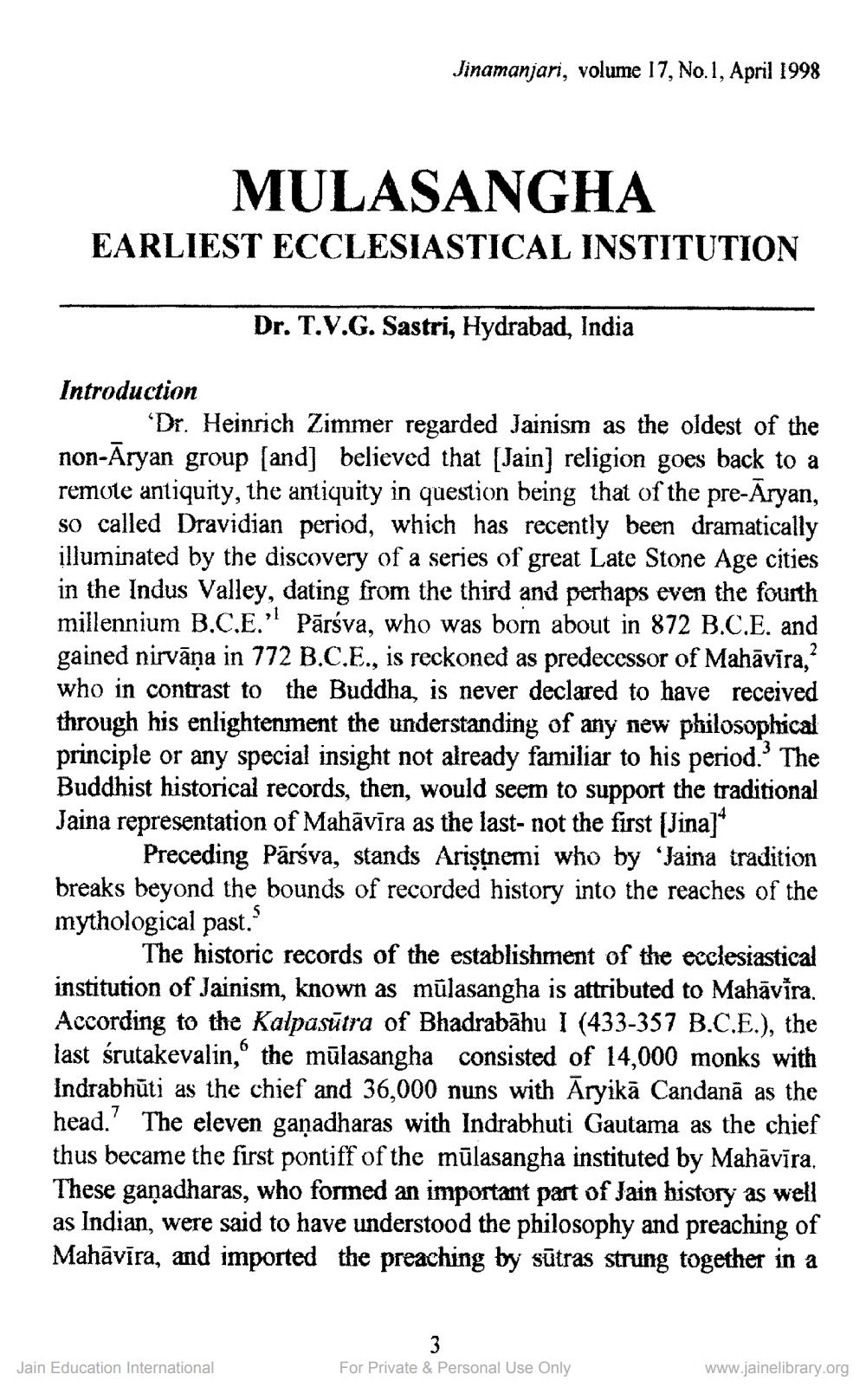________________
Jinamanjari, volume 17, No. 1, April 1998
MULASANGHA EARLIEST ECCLESIASTICAL INSTITUTION
Dr. T.V.G. Sastri, Hydrabad, India
Introduction
‘Dr. Heinrich Zimmer regarded Jainism as the oldest of the non-Aryan group [and] believed that (Jain) religion goes back to a remote antiquity, the antiquity in question being that of the pre-Aryan, so called Dravidian period, which has recently been dramatically illuminated by the discovery of a series of great Late Stone Age cities in the Indus Valley, dating from the third and perhaps even the fourth millennium B.C.E."! Pārsva, who was born about in 872 B.C.E. and gained nirvāna in 772 B.C.E., is reckoned as predecessor of Mahāvīra,? who in contrast to the Buddha, is never declared to have received through his enlightenment the understanding of any new philosophical principle or any special insight not already familiar to his period.' The Buddhist historical records, then, would seem to support the traditional Jaina representation of Mahāvīra as the last- not the first (Jina)
Preceding Pārsva, stands Aristnemi who by Jaina tradition breaks beyond the bounds of recorded history into the reaches of the mythological past.
The historic records of the establishment of the ecclesiastical institution of Jainism, known as mūlasangha is attributed to Mahāvīra. According to the Kalpasūtra of Bhadrabāhu I (433-357 B.C.E.), the last śrutakevalin, the mūlasangha consisted of 14,000 monks with Indrabhūti as the chief and 36,000 nuns with Āryikā Candanā as the head.' The eleven gañadharas with Indrabhuti Gautama as the chief thus became the first pontiff of the mūlasangha instituted by Mahāvīra, These gañadharas, who formed an important part of Jain history as well as Indian, were said to have understood the philosophy and preaching of Mahāvīra, and imported the preaching by sūtras strung together in a
Jain Education International
For Private & Personal Use Only
www.jainelibrary.org




